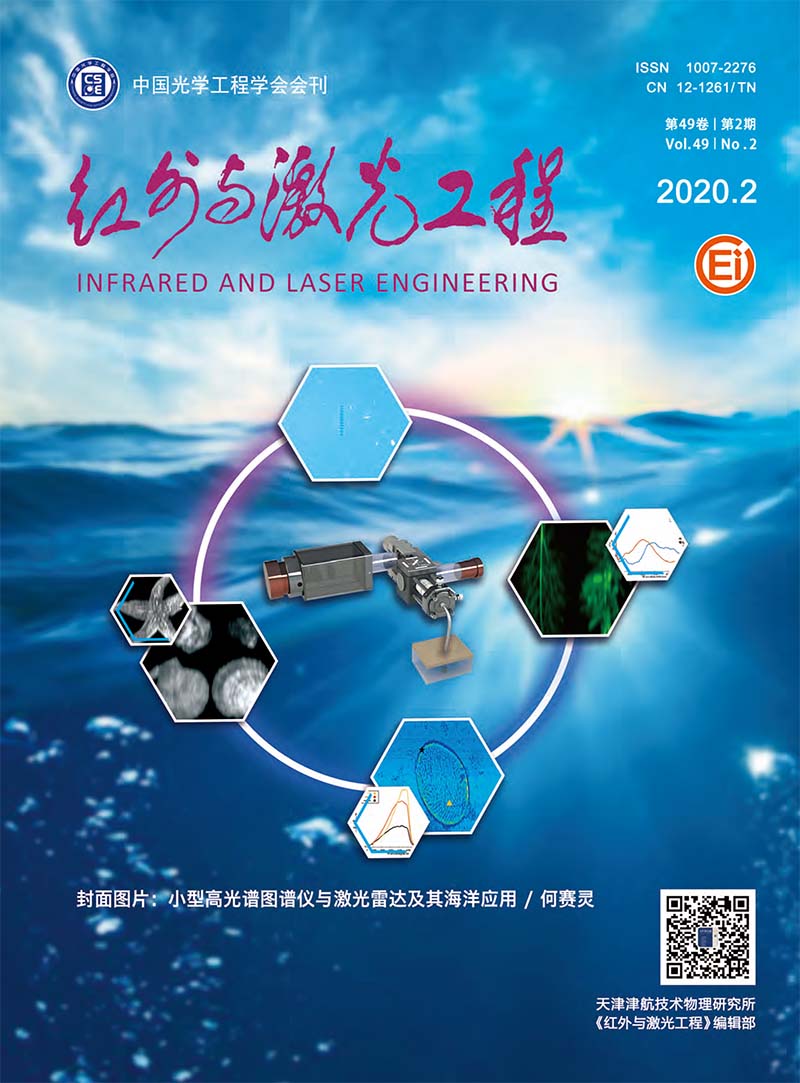|
[1]
|
Kaushal H, Kaddoum G. Underwater optical wireless communication[J]. IEEE Access, 2016, 4:1518-1547. |
|
[2]
|
Shen J, Wang J, Zhang C, et al. Towards power-efficient long-reach underwater wireless optical communication using a multi-pixel photon counter[J]. Optics Express, 2018, 26(18):23565-23571. |
|
[3]
|
Yi X, Li Z, Liu Z. Underwater optical communication performance for laser beam propagation through weak oceanic turbulence[J]. Applied Optics, 2015, 54(6):1273-1278. |
|
[4]
|
Gökce M C, Baykal Y, Ata Y. Performance analysis of M-ary pulse position modulation in strong oceanic turbulence[J]. Optics Communications, 2018, 427:573-577. |
|
[5]
|
Fu Y, Huang C, Du Y. Effect of aperture averaging on mean bit error rate for UWOC system over moderate to strong oceanic turbulence[J]. Optics Communications, 2019, 451:6-12. |
|
[6]
|
Fu Y, Du Y. Performance of heterodyne differential phase-shift-keying underwater wireless optical communication systems in gamma-gamma-distributed turbulence[J]. Applied Optics, 2018, 57(9):2057-2063. |
|
[7]
|
Kiasaleh K. Performance of APD-based, PPM free-space optical communication systems in atmospheric turbulence[J]. IEEE Transactions on Communications, 2005, 53(9):1455-1461. |
|
[8]
|
Jamali M V, Mirani A, Parsay A, et al. Statistical studies of fading in underwater wireless optical channels in the presence of air bubble, temperature, and salinity random variations[J]. IEEE Transactions on Communications, 2018, 66(99):4706-4723. |
|
[9]
|
Liu W, Xu Z, Yang L. SIMO detection schemes for underwater optical wireless communication under turbulence[J]. Photonics Research, 2015, 3(3):48-53. |
|
[10]
|
Xu F, Khalighi A, Causs Pé, et al. Channel coding and time-diversity for optical wireless links[J]. Optics Express, 2009, 17(2):872-887. |
|
[11]
|
Ye F, Zhang J, Xie J, et al. Propagation properties of the rotating elliptical chirped Gaussian vortex beam in the oceanic turbulence[J]. Optics Communications, 2018, 426:456-462. |
|
[12]
|
Ata Y, Baykal Y. Effect of anisotropy on bit error rate for an asymmetrical Gaussian beam in a turbulent ocean[J]. Applied Optics, 2018, 57(9):2258-2262. |
|
[13]
|
Wang X, Yang Z, Zhao S. Influence of oceanic turbulence on propagation of Airy vortex beam carrying orbital angular momentum[J]. Optik, 2019, 176:49-55. |
|
[14]
|
Gökce M C, Baykal Y. Aperture averaging in strong oceanic turbulence[J]. Optics Communications, 2018, 413:196-199. |
|
[15]
|
Farid A A, Hranilovic S. Outage capacity optimization for free-space optical links with pointing errors[J]. Journal of Lightwave Technology, 2007, 25(7):1702-1710. |
|
[16]
|
Sandalidis H G, Tsiftsis T A, Karagiannidis G K, Optical wireless communications with heterodyne detection over turbulence channels with pointing errors[J]. Journal of Lightwave Technology, 2009, 27(20):4440-4445. |
|
[17]
|
Yu S, Ding J, Fu Y, et al. Novel approximate and asymptotic expressions of the outage probability and BER in gamma-gamma fading FSO links with generalized pointing errors[J]. Optics Communications, 2019, 435:289-296. |
|
[18]
|
Yang F, Cheng J, Tsiftsis T A. Free-space optical communication with nonzero boresight pointing errors[J]. IEEE Transactions on Communications, 2014, 62(2):713-725. |
|
[19]
|
Caplan D O. Laser communication transmitter and receiver design[J]. Journal of Optical and Fiber Communications Reports, 2007, 4(4-5):225-362. |
|
[20]
|
Andrews L C, Phillips R L, Hopen C Y. Aperture averaging of optical scintillations:power fluctuations and the temporal spectrum[J]. Waves in Random Media, 2000, 10(1):53-70. |
|
[21]
|
Baykal Y. Scintillation index in strong oceanic turbulence[J]. Optics Communications, 2016, 375:15-18. |
|
[22]
|
Prudnikov A P, Brychkov Y A, Marichev O I. Integrals and Series. More Special Functions[M]. London:Gordon and Breach, 1992. |
|
[23]
|
Adamchik V S, Marichev O I. The algorithm for calculating integrals of hypergeometric type functions and its realization in REDUCE system[C]//Proceedings of the International Symposium on Symbolic and Algebraic Computation, 1990:212-224. |
|
[24]
|
Gradshteyn I S, Ryzhik I M. Table of Integrals, Series, and Products[M]. 7th ed. New York:Academic, 2008. |









 DownLoad:
DownLoad: